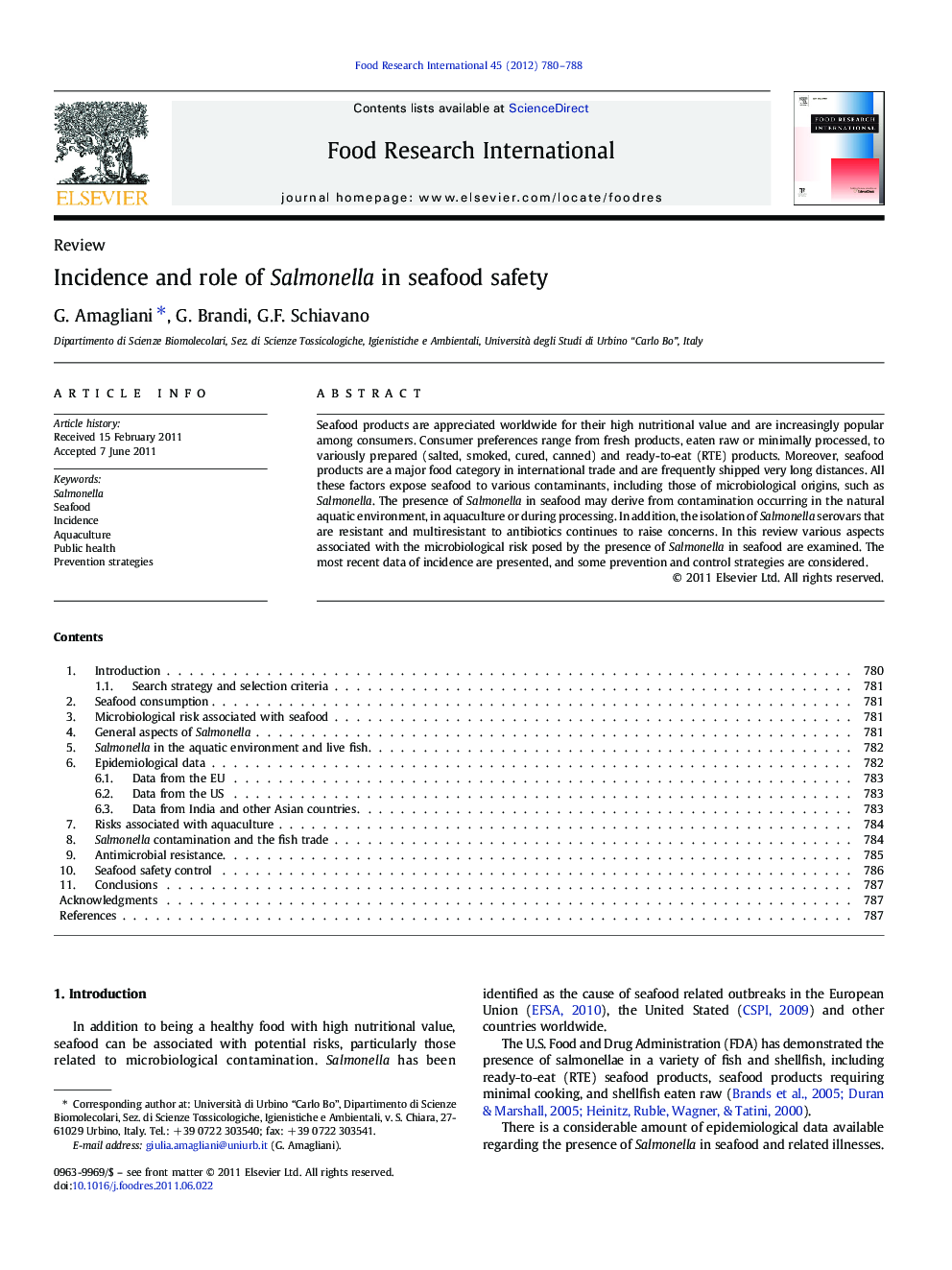| Article ID | Journal | Published Year | Pages | File Type |
|---|---|---|---|---|
| 4561727 | Food Research International | 2012 | 9 Pages |
Seafood products are appreciated worldwide for their high nutritional value and are increasingly popular among consumers. Consumer preferences range from fresh products, eaten raw or minimally processed, to variously prepared (salted, smoked, cured, canned) and ready-to-eat (RTE) products. Moreover, seafood products are a major food category in international trade and are frequently shipped very long distances. All these factors expose seafood to various contaminants, including those of microbiological origins, such as Salmonella. The presence of Salmonella in seafood may derive from contamination occurring in the natural aquatic environment, in aquaculture or during processing. In addition, the isolation of Salmonella serovars that are resistant and multiresistant to antibiotics continues to raise concerns. In this review various aspects associated with the microbiological risk posed by the presence of Salmonella in seafood are examined. The most recent data of incidence are presented, and some prevention and control strategies are considered.
► Salmonella has been found in various seafood categories worldwide. ► Salmonella can contaminate seafood from harvest to consumption. ► Seafood safety control through HACCP is imperative to protect public health.
